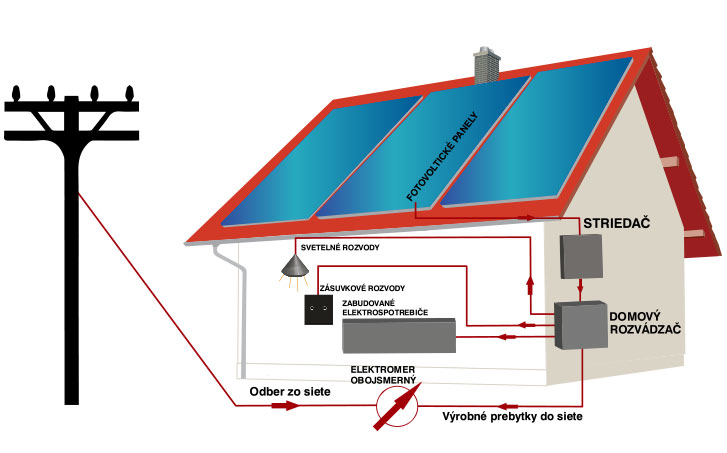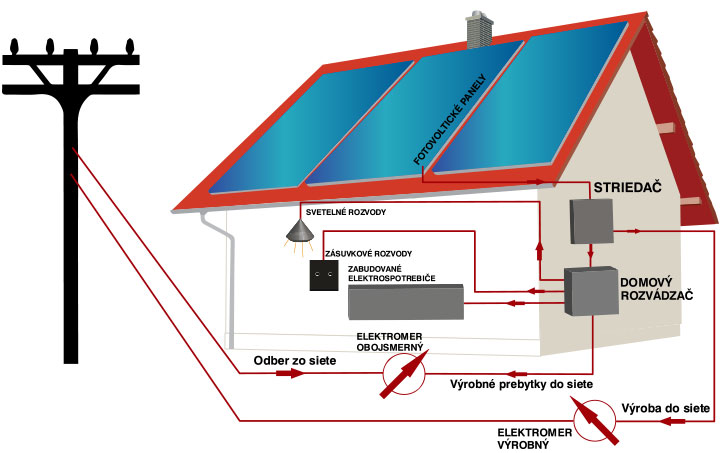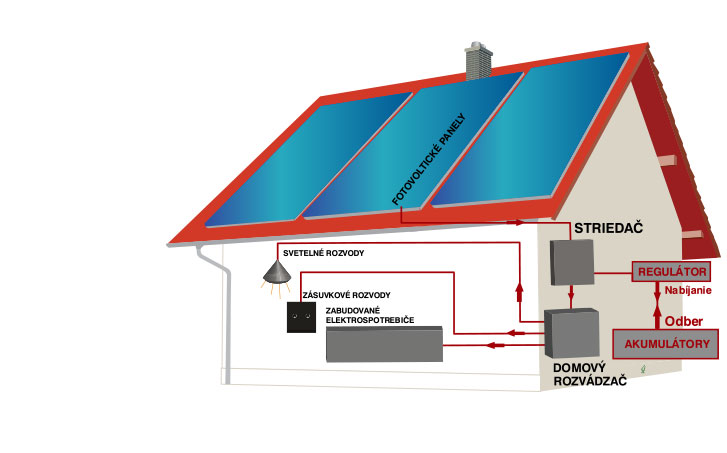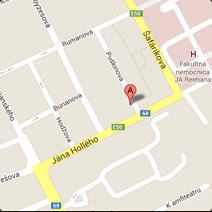General information
Thanks to the modern technology, the Solar radiation can be converted directly into electricity. It was first observed in 1839 by Alexandre Edmond Becquerel. The Photovoltaic effect refers to photons of light exciting electrons into a higher state of energy allowing them to act as a charge carrier for electronic current. The first practical application of photovoltaic was to power orbiting satellites and other space crafts in 1958.
Slovakia has favorable conditions for the use of solar energy for photovoltaic applications. In general it can be said, that 1Wp installed capacity produces about 1kWh of electricity per year. This is just estimated value and it depends on other factors such as the average number of cloudless days in the location, altitude and the orientation of panels.
The highest annual solar radiation which is 75 percent occurs during the summer season. Therefore, for maximum effect of the heatflow panel, the recommended inclination of panel is 35 degrees. While for year round system, it is recommended 50 degrees slope. Deviation of the ideal inclination value represents differences in the performance of a few percent.
Thanks to the low weight and it´s versatility, Photovoltaic panels are easy to install on slanted or flat roofs, facades and garden sheds.
Photovoltaic heating system that is made of certified components has minimum of 25 years lifespan quarantee. During their lifespan, PV lose on their efficiency. After ten years of operating the loss is about 8 percent, and after 25 years of operating the loss is about 20 percent
Types of PV installation
Grid connected Solar electrIcity
The main reasons of instaling Photovoltsic systems are ecological benefits, operating low cost and profit from selling extra energy.
Grid connected PV Systens for own usage
This type of solution for PV instalation represents the most profitable investment, if all the converted energy produced in PV we are able to use. Photovoltaic system is connected into an existing house service panel. It´s the simplest and very effective system. In most cases it even doesn´t need a building permit, it´s enough to only anounce the instalation to buiding authorities.

Photovoltaic systems for the direct sale of the produced electricity into distribution network
If the consumption of the electricity in the building is negligible, or there are other reasons why not to take the advantage of the system for own use, it is possisble to sell all the electricity generated to the distribution network.
The advantage over the system for own use only is that the operator knows exactly how to calculate what will be his annual profit from the sale of extra produced energy.
For this type of Photovoltaic system, it is necessary to build a separate electrical connection with the measurement at the site, or on any accessible place. To build photovoltaic power plant, a distributor needs to apply for a special building permission.

Stand alone power system
In some secluded areas without the grid connected electricity source, STAND ALONE POWER SYSTEM is the only option how to produce electricity.
Depending on the kind of household appliances, or user´s usage of electricity, the stand alone system can be connected to the battery bank for accumulating the extra energy. Later in certain time of day like evening or night or days when sun is not available the extra energy can be used.








